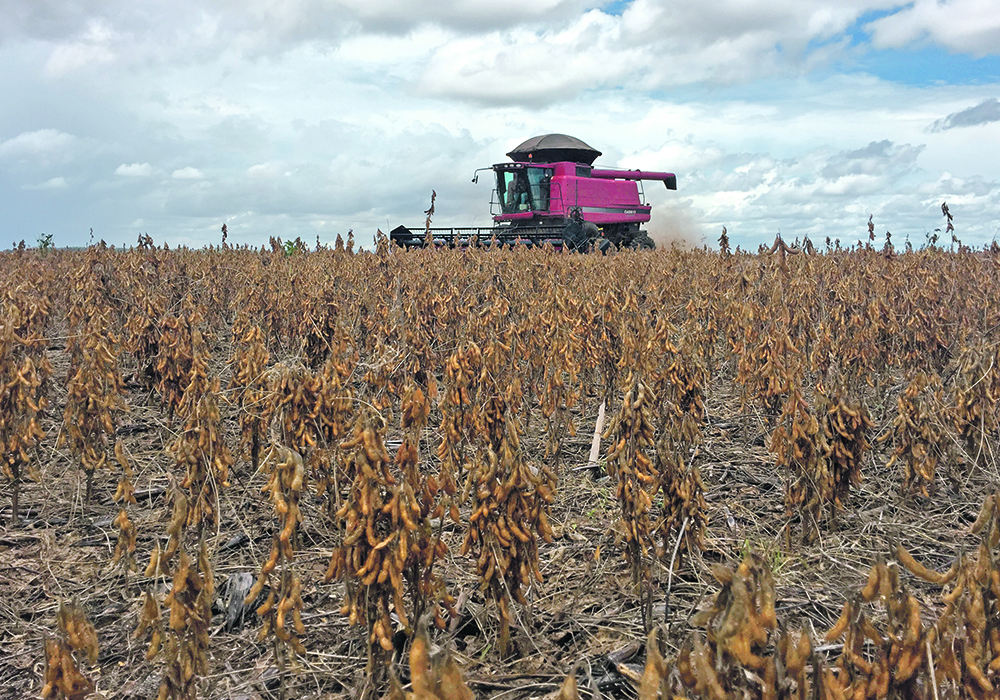This fall’s crop price rally is driven in part not by current supply and demand fundamentals, but by worries about what might happen to crops to be harvested next year.
We can’t ignore the market support from current strong demand from China and elsewhere, but a good portion of the market action is driven by traders taking the dry weather in several key production regions very seriously.
Of course one good rain can calm fears but the dry trend in a large part of South America is worrying because it is tied to a La Nina, a massive system that influences weather for months.
Read Also

Critical growing season is ahead for soybeans
What the weather turns out to be in the United States is going to have a significant impact on Canadian producers’ prices
The United States Weather Service last week raised its forecast for a moderate to strong La Nina this winter to 85 percent from 75 percent the previous month.
Soybean growers in Brazil and corn producers in Argentina are already behind in their seeding as they wait for rain.
The trade is also keeping an eye on dry weather in Russia and its effect on the recently seeded winter wheat crop.
But there are differences between these two situations and I think the more serious is with soybeans. Futures prices for the major crops have all hit multi-year highs. To break through resistance higher won’t be easy, but oilseeds have a better chance than wheat.
Some farmers might have looked at the recent rally in wheat and asked what’s up? Weren’t analysts talking about a world awash in wheat just a few months ago?
Well, global supply is still comfortable and stocks at the end of the current crop year are expected to be larger than they were at the end of 2019-20. Indeed global year-end wheat stocks have risen most years since 2013.
Global soybean year-end stocks are going in the opposite direction, falling last year and forecasted to drop again this year. And in the wider picture of total oilseed crops, including canola, sunflower, cottonseed and others, we also see declining year-end stocks.
The global stocks-to-use ratio for soybeans is much tighter than for wheat.
While Argentina’s wheat crop is stressed from drought, that is offset by good prospects for Australia and a big Russian crop.
Judging from official Russian government harvest reports that say the wheat crop is 10 percent bigger than last year, the U.S. Department of Agriculture will likely raise that country’s production estimate to 80 million tonnes from 78 million.
The country is confident enough in its current supplies to increase its grain (wheat, barley, corn) export forecast to 50 million tonnes, up five million from its last forecast.
Experts don’t know enough about La Nina’s effects on Russian weather to say that the current dry spell is directly linked to it. It might rain yet this fall as it did recently in Ukraine, which also had a dry autumn.
We must also remember that winter wheat is resilient. It seems to have more lives than a cat.
But I don’t want to dismiss the danger to the 2021 crop. Andrey Sizov of SovEcon, a leading authority on Russian wheat, last week tweeted that Russian “winter wheat conditions are really bad, we expect record-high losses.” I assume that means crops that will fail to germinate or will suffer winter kill.
La Nina’s effect on South American crops is better documented. It means the current dry trend will likely continue in Argentina and southern Brazil, creating headaches for Brazilian farmers who desperately want to seed. Because of recent price rally and the weakness of the country’s currency, soybean prices there are at a record high.
Michael Cordonnier of Soybean and Corn Advisor says the delay in seeding does not necessarily mean reduced yields if rain comes later in the season. However, the delays push the first exports back. That delay, coupled with expected very tight year-end stocks in Brazil, means if buyers want soybeans in January and early February they’ll likely have to get them from the U.S.
The situation becomes more dire if it remains dry through Brazil’s growing season and actually lowers yields.
Meanwhile in Argentina, in addition to current dry weather, farmers are upset about currency issues and export taxes. Analysts believe farmers will hold back selling and the huge crushing industry there will suffer, leading to less soy oil and meal on world markets.
On the other side of the Pacific, La Nina often brings excessive rain to palm oil producing countries. That can lead to temporary price supporting production disruptions but ultimately can increase production.
Palm analysts Dorab Mistry of Godrej International and Thomas Mielke of Oil World were quoted in a Reuters news story last week saying that palm prices should be strong through the first half of 2021, supported by a strong vegetable oil complex.
Mielke also noted stronger than expected global demand for vegetable oil from the biodiesel sector.
Taking all this together, oilseed prices, including canola, should be better supported than wheat. Canola is also supported by a strong start to the shipping season with a record 1.88 million tonnes exported in the first nine weeks.
In canola futures, there is resistance in the $535-$540 per tonne range that has been the peak of previous rallies.
Will the market break through? If we see a few more weeks of dry South American weather, maybe it will.

















